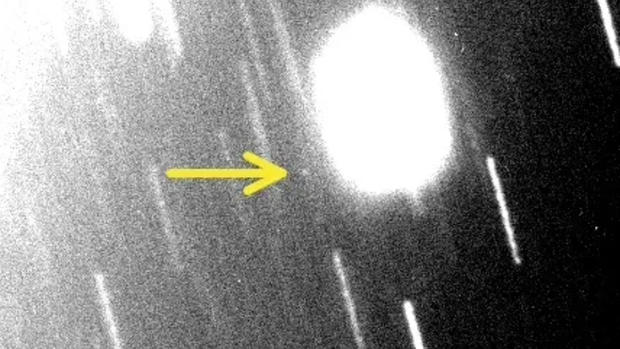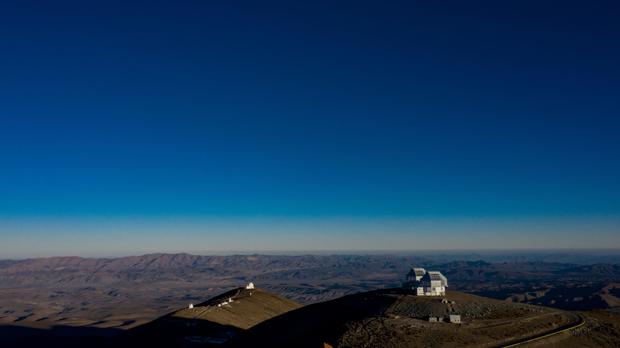
Astronomers discover 3 tiny moons orbiting Uranus and Neptune
Astronomers with the International Astronomical Union have discovered three previously unknown moons at the farthest planets of our solar system — two circling Neptune and one around Uranus.
The moons were spotted using powerful land-based telescopes at various sites the world. The latest discovery put Uranus at 28 known moons and Neptune at 16.
One moon orbiting Uranus is so small it only measures five miles in diameter.
statement Friday. “It took special image processing to reveal such faint objects.”
Scott Sheppard/Carnegie Institute for Science
Astronomers hope that the discovery will lead to a better understanding of how these moons were formed, the tumultuous early years of our solar system and the movement of the planets on the system’s outer edges.
Astronomers also hypothesize these new moons were captured by the gravity of Uranus and Neptune either during or shortly after they formed.
How did astronomers find the new moons?
Dozens of long-exposure photographs over multiple nights by some of the world’s largest telescopes allowed astronomers a more detailed observation of Uranus’ and Neptune’s surroundings than had previously been possible.
“Because the moons move in just a few minutes relative to the background stars and galaxies, single long exposures are not ideal for capturing deep images of moving objects,” Sheppard said in the press release. “
By layering these multiple exposures together, stars and galaxies appear with trails behind them, and objects in motion similar to the host planet will be seen as point sources, bringing the moons out from behind the background noise in the images,” Sheppard added.
Sheppard used the Magellan Telescope in Chile to find the brighter of the two Neptunian moons. Collaborating with David Tholen at the University of Hawaii, Chad Trujillo at Northern Arizona University and Patryk Sofia Lykawa at Kindai University in Japan, he found the fainter new Neptunian moon using the Subaru Telescope in Hawaii.
MARTIN BERNETTI/AFP via Getty Images
Both moons were first seen in September 2021.
The brighter of the two Neptune moons is about 23 kilometers (about 14 miles) in size, and takes almost nine years to orbit the ice giant. The “faintest” moon takes around 27 years — the longest known orbital journey by a moon — to complete one revolution, according to Sheppard.
Uranus’ newest moon was first spotted in November 2023, also using the Magellan Telescope. Sheppard made follow-up observations a month later. With collaborators, he was able to locate the moon in older images that he’d taken in 2021 at Magellan, as well as at the Subaru telescope in Hawaii.
The Uranian moon measures about 8 kilometers, or 5 miles, in size, and it takes 680 days to orbit the planet.
What will the newly discovered moons be named?
The latest discovery orbiting Uranus marked the first of its kind in more than 20 years. Provisionally named S/2023 U1, the newly-discovered moon will likely be named after a character in a Shakespeare play, in the tradition of other moons orbiting the planet.
The planet’s five major moons — Miranda, Ariel, Umbriel, Titania, and Oberon — are known as “literary moons,” according to NASA. They are named after Shakespearean characters alongside a few named after characters in the works of Alexander Pope
Neptune is named after the Roman god of the sea. Its largest moon, Triton, was discovered in 1846 by English astronomer William Lassell, 17 days after German astronomer Johann Gottfried Galle discovered the planet.
Both of the planet’s newly-discovered moons — S/2021 N1 and S/2002 N5 — will eventually receive permanent names based on the 50 Nereid sea goddesses in Greek mythology, NASA noted.
But the search for more tiny moons is not over, according to Sheppard. “We suspect that there may be many more smaller moons” yet to be discovered, he told the Associated Press.
More
More
Source: cbsnews.com

